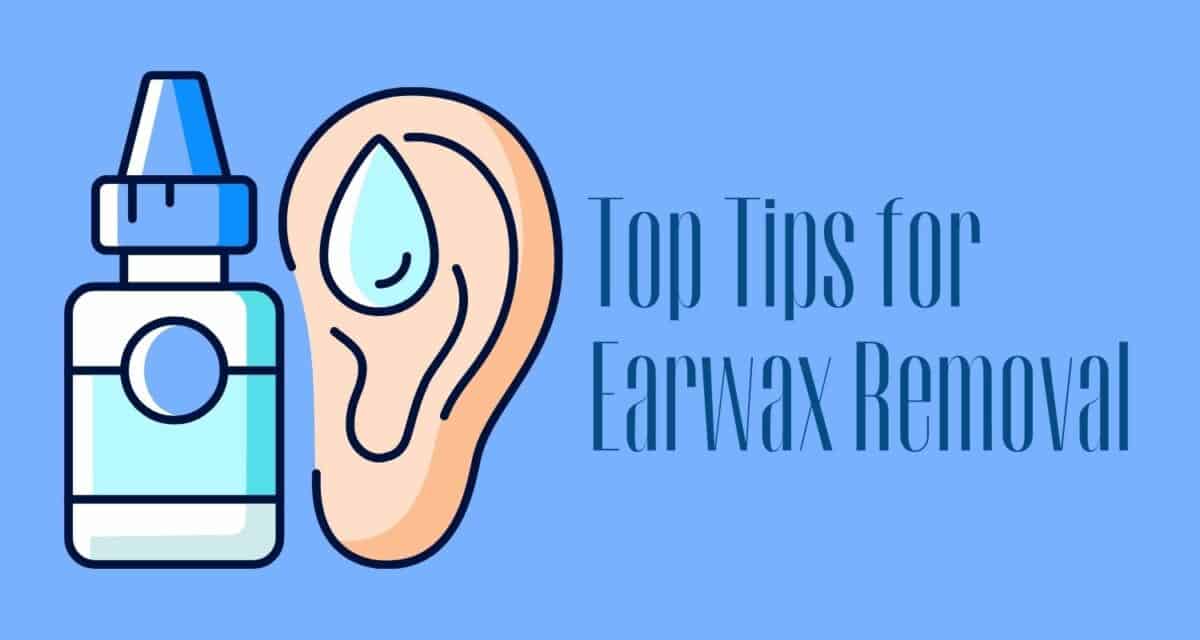Are you grossed out by earwax? A lot of people are; however, earwax plays an important in the health of our ears. Even so there are safe and unsafe ways to remove it. To find out all about earwax and how to keep it under control, read on!
What Is Earwax?
Technically it’s not wax at all but cerumen, a yellow sticky or dry and flaky substance which seeps out the ears. While it can be unwanted at times it plays an important role for our ear’s health. Cerumen acts as an antimicrobial substance protecting our ears from small cuts and keeping them from becoming infected. In addition, earwax acts as a self-cleaning agent, moving dirt and debris which gets lodged in the ears during a normal day to the outer ear.
Earwax consists of skin cells from the auditory canal which are constantly renewing themselves. As skin falls off, they are pulled in to make up earwax. In addition, earwax is made of is made of secretions from two glands. This includes the ceruminous and the sebaceous glands. The ceruminous gland is a sweat gland located just outside the auditory canal, while the sebaceous glands excrete oil which aids in lubrication of the skin.
Removing Earwax
In most instances earwax removes itself. It is constantly regenerating and sending execess ear wax to the outer ear, where it can be wiped away. However, there are instances where earwax can buildup in the ear canal and become impacted. When this occurs, it can affect the ability to hear. Earwax buildup occurs when your ear makes earwax faster than your body can remove it, often occurring from a bony blockage or an infection such as swimmers’ ear. In these instances, earwax should be removed by a professional such as an Ear Nose and Throat Doctor (ENT) or Audiologist. Common procedures to clean the ears include using a small, curved instrument called a curet or by using suction while inspecting the ear. In some instances, a warm flush can loosen the earwax using a water pick or a rubber-bulb syringe filled to remove the blockage.
Home Earwax Removal
An important thing to remember is that you should never try to clear a blockage of earwax on your own. It is all too easy to push an impaction of earwax further in your ears creating a larger issue. In fact, avoid inserting anything in the ear canal smaller than your fist. Many people default to cotton swabs to clean out earwax, but this is not recommended. Here are a few tips to ensure safe earwax removal and maintenance to keep your earwax from building up in the first place.
Removing Earwax at Home
Because earwax is self-cleaning you can let it do its job on its own but there are things you can do to help it along.
Mineral Oil
A safe way to instigate the removal of earwax is to insert only a few drops of mineral oil or baby oil in your ear. The oil will soften the wax and instigate it to move to the outer ear where it can be wiped away with a damp cloth. You can do this ahead of time to provide time for the mineral oil to soften a blockage of wax. Often a warm shower can then soften the earwax and allow it to naturally move out of the canal.
Flushing out Your Ears at Home
In some instances, you can try using a syringe with a rubber ball to carefully add warm water to the ear canal. Try moving your head in the opposite direction of the treated ear to let the water drain out. Using a soft towel helps you absorb any excess water from inside the ear.
Hydrogen Peroxide to Clean Earwax
A 2004 study discovered that hydrogen peroxide is a safe alternative to warm water and oil. Hydrogen peroxide is a disinfectant but also moves dirt out of a substance. Try applying the peroxide with an eyedropper and let it sit for several minutes before flushing the ear with warm water. However, due to the bubbling nature of peroxide, many people will find this sensation strange and uncomfortable.
Get Help with Your Ears
If you are experiencing an issue with your hearing, it’s important you contact us. We can help you determine if it is due to an impaction of earwax or something else and help you find the best solution for all your hearing needs. Contact us today.


